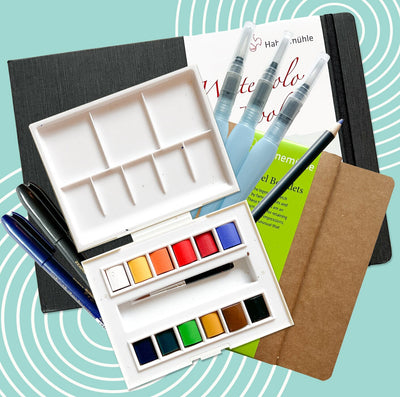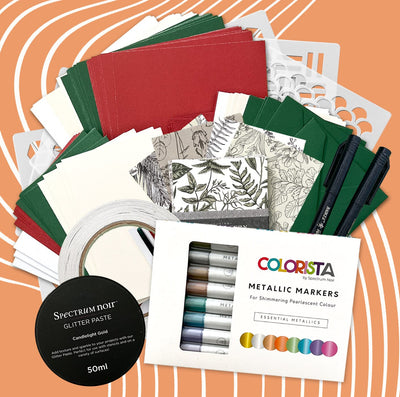When it comes to drawing manga, you get the opportunity to take part in a broad style That offers a long tradition and many subgenres to find your expression. There are several influences, sources of inspiration, and possibilities to allow you to fully customize your character.
Just as with any kind of character creation, it's important to work from an initial concept when you begin drawing. Finalizing a character concept may take numerous sketches, iterations, or even poses. Taking time to refine your character will help you to strike the right amount of style and story in your drawing. The key to character drawing is using the character's pose and personal details to tell as much on first glance as possible.

So where do you begin with creating a manga character?
1. Brainstorm Your Character and Build a Concept for Their Pose
You character brainstorming can take many forms, including finding references, inspiration, and getting to know about your character. The more you know the character the better you will be able to represent them visually. This is one reason that it can be much easier to get started with drawing fan art than drawing original characters. Those that you represent in fan art already have a story, posture, and style that you can draw from. If you intend to make an original character, you'll have to make choices about all these character traits.
- What's your character's posture like? Fitness level, and overall style?
- Do they perfectly fix their hair in the morning or is it slightly messy?
- What kind of clothes do they wear?
- What are they normally doing? It's a good idea to portray the character in the act of doing something that most defines them.
2. Sketch a Wireframe
Once you understand your character, you can shift to brainstorming your composition. The best way to start this is by sketching a few different wireframes for your character. This is a good time to experiment with poses, movement, and flow.
You don't want to start with details too soon. Make sure your wireframe and silhouette are how you like them. If you begin with a good shape, you can start on the right footing.
One common way to make wireframes is to create the pose using circles for major features, including the head, elbows, hands, feet, and knees. Use a square for the torso and an inverted triangle for the pelvis.
You can and should immediately take your style up a notch by visualizing this wireframe in three dimensions. This means that when you draw circles, make them low-detail spheres. Draw the pelvis as an oblong cone and make the rectangular chest more like a three-dimensional cube.
Try to avoid drawing your character head-on from the front. Instead, start by drawing them in a three-quarter view. This will make it easier to express dimensionality and dynamics.
3. Correct Proportions
Pick your favorite of the wireframe sketches and begin correcting the proportions. In this step, you will be tweaking the shape and dimensions of the shapes used to represent body parts. If you don't know what shape certain body parts should be, don't hesitate to find a photo for reference.
Keep in mind that using certain primitive shapes in this initial sketch symbolically portray aspect of your character. For example, a character with a square-shaped head will offer a different tone than a character with a round or triangular head.
Correct your wireframe based on the character. A stronger character will have a bulkier frame, whereas a more fragile character will have a thinner, smaller, or more elongated frame.
In general, you can differentiate a male character from a female character in this frame as well. A female character will tend to have more narrow shoulders and wider hips. The opposite will be true for a male character, which will have narrower hips and wider shoulders.
Manga characters tend to blend proportions, depending on the manga style you're hoping to achieve. For example, many manga styles represent characters with elongated legs when compared to human anatomy.
4. Outline the Shapes to Create a Skin Layer
For most manga art, clean outlines are very important. It's a good idea now to create an outline that makes your skin layer. This is not your final outline or final detail layer. It is there for reference to summarize all the work and anatomy that you have created so far.
The skin layer will clean up your sketch and give you a basic shape on which to draw details in the next steps. Try as much as you can to preserve the three-dimensional look that you created in the wireframe.
5. Draw Facial Proportions
In manga, the basic face is drawn using a sphere attached to a cone. One-third from the bottom of the sphere, draw a line that curves around its front. This will be your eye line.
To indicate where the eyes will go, draw a line of symmetry that curves vertically down the front of the face. Remember that in most cases this will not be in the direct center of your face sphere. If you're drawing from a three-quarter view, this line will be located closer to one side. Using the horizontal line, draw a circle on either side of the symmetry line.
Remember that manga eyes tend to be disproportionately large. Lightly detail the eye shape, since these are an important part of creating your character. Eyes that droop slightly down to the outside will appear to be more kind, and eyes that pull at the inner corners will appear more aggressive.
Next, draw a small circle at the bottom of the sphere, where it intersects with the cone. This circle indicates where the bottom of the nose should go. In most manga art, unless the character is designed to have a distinctive nose, the shape of the nose will be minimal, using a single curve or line.
6. Add Clothing, Decoration, and Hair
Using your skin layer outline as a guide, draw in your character's clothing. Remember that these clothes should move with the character in their pose to create a dynamic image. Try to be inventive with these clothes since these will go a long way toward adding interest and representing your character's story.
Draw in the shape of the hair. For manga art this can be larger than life, to make your character as dynamic as possible. Remember that the hair shape should appear to have movement like the rest of the character. Additionally, you can use the hair to add direction.
7. Tidy Your Outlines and Ink Your Drawing
Create a very clean inking layer of your new outlines, the clothes, and the showing skin. Fine line details, such as major folds in the clothing, major facial details, and patterns. Anything in the foreground of the image should have a slightly thicker outline than those in the background. Similarly, use line width to draw the eye to the most important parts of the image. While you want to keep this final outline clean, make sure not to exclude any of the important details.
8. Refine Shading and Color
You can now paint or shade the image in black and white. As you indicate shading, make a note for yourself about where the light source is located. Try to keep the shading realistic, so that your drawing comes off as more believable. It can be helpful to use a photo reference for shading if you have trouble visualizing where the light and shadows will hit. If you are working in color, avoid using black for shading. Instead, use a deeper version of the way that the color looks in the light.
9. Now You Can Focus on Specific Details
Manga art style contrasts areas of minimalistic detail with areas of high detail. In most cases, the face and skin will be more minimalistic allowing all the detail to be focused on the eyes.
For your character, pick the areas of concentrated detail that will best represent their story. This will help to make your character as expressive as possible.


